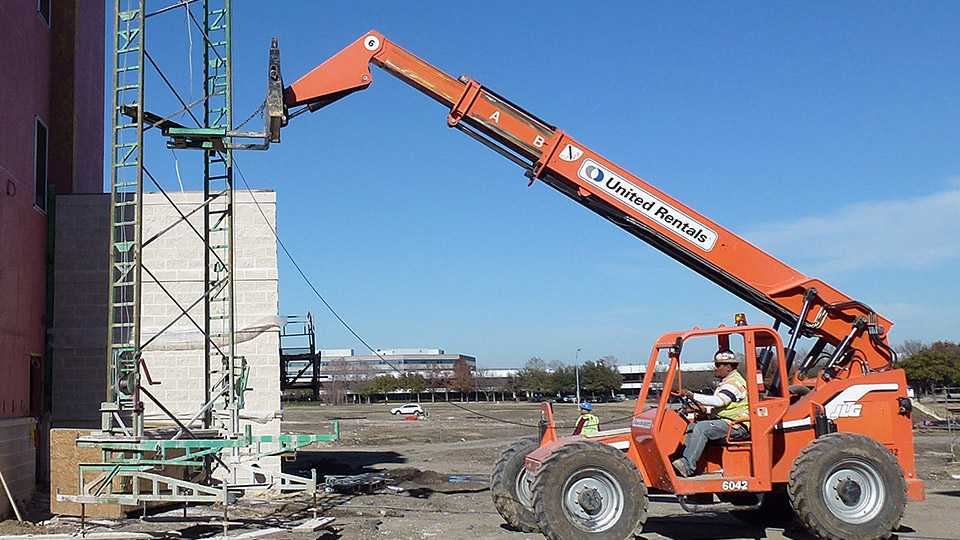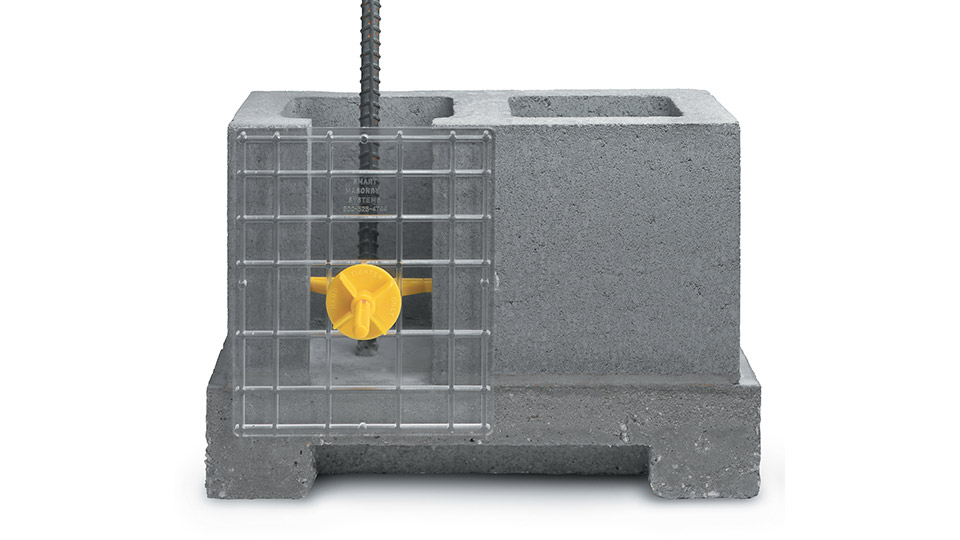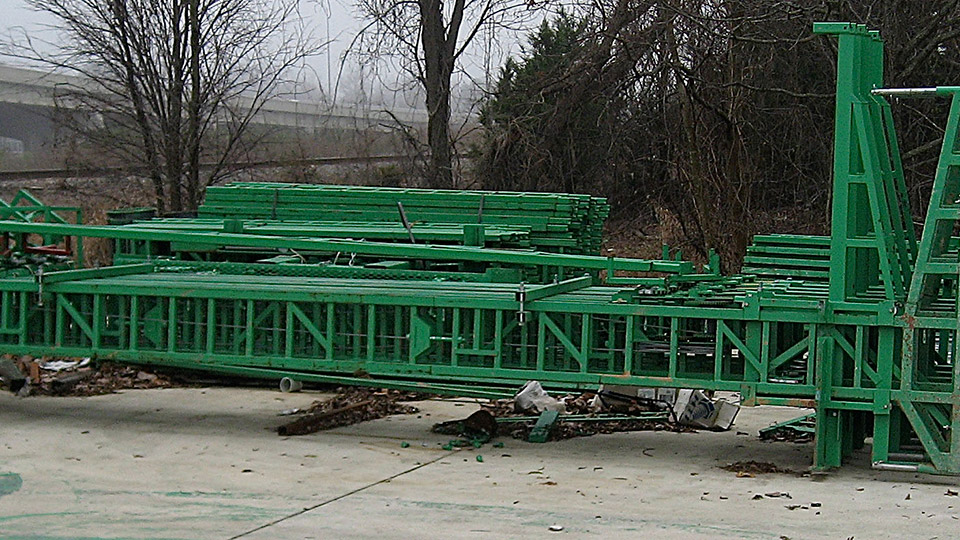
The Swivel Forklift Bar allows your lift driver to grab towers from one wall and land them at the next wall in minutes, and at any angle. Notice the mud sills are nailed to the leveling jacks.

The transparent window allows inspection of the cell, both before and after the pour. The manufacturer says he’s never had a compliant about a blowout.

A T-bolt holds the plastic window flush with the face of the wall. After the pour, the window is removed, and the T-bolt is snapped off.

This contractor clamps his base towers together in packages of 10. Each one is four feet wide, allowing him to put two packs across his trailer. Each pack is 14 feet long.

Base Towers with extension towers attached are clamped together in four-foot-wide 10 packs. Many Non-Stop users leave their towers completely assembled 18 or 27 feet high and never take them apart.